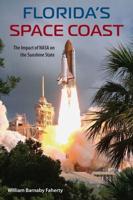Publisher's Synopsis
Observed spectral data from supersonic jet aircraft are known to contain much more high frequency energy than can be explained by linear acoustic propagation theory. It is believed that the high frequency energy is an effect of nonlinear distortion due to the extremely high acoustic levels generated by the jet engines. The objective, to measure acoustic waveform distortion for spherically diverging high intensity noise, was reached by using an electropneumatic acoustic source capable of generating sound pressure levels in the range of 140 to 160 decibels (re 20 micro Pa). The noise spectrum was shaped to represent the spectra generated by jet engines. Two microphones were used to capture the acoustic pressure waveform at different points along the propagation path in order to provide a direct measure of the waveform distortion as well as spectral distortion. A secondary objective was to determine that the observed distortion is an acoustic effect. To do this an existing computer prediction code that deals with nonlinear acoustic propagation was used on data representative of the measured data. The results clearly demonstrate that high intensity jet noise does shift the energy in the spectrum to the higher frequencies along the propagation path. In addition, the data from the computer model are in good agreement with the measurements, thus demonstrating that the waveform distortion can be accounted for with nonlinear acoustic theory. Welz, Joseph P. and Mcdaniel, Oliver H. Unspecified Center...









